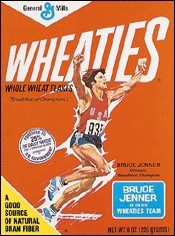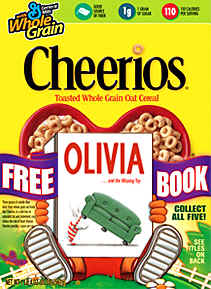The Breakfast of Champions: Teaching Audience Analysis Using Cereal Boxes
By Jill Gibson
Instructor, Speech and Mass Communication
Amarillo College

Introduction
Just as breakfast is often considered the most important meal of the day, audience analysis is one of the most important parts of speech preparation. Unfortunately, much like breakfast, conducting audience analysis is a step that students often skip. As Michael and Suzanne Osborn note, "The more you know about your audience and speaking situation, the more effective your speech will be," (2006, p. 105). This activity reminds students of the importance of conducting audience analysis—and eating a good breakfast too.
The exercise allows students to practice analyzing and relating to different audiences by profiling the potential purchasers of various cereal boxes. It highlights the importance of audience analysis while providing practice in working in groups, thinking critically and presenting ideas aloud. Finally, the activity engages students and creates a lively classroom atmosphere while reinforcing important concepts through active learning.
Learning Objectives
Preparation for the Project
This activity should follow a brief lecture or reading assignment regarding audience analysis. Concepts to teach prior to the activity include: becoming an audience-centered speaker, demographic audience analysis, psychological audience analysis and situational audience analysis (Lucas, 2007; Beebe & Beebe, 2003).
Before the class, purchase five or six boxes of cereal and empty out the boxes. Each box should reflect a specific target market. For example, the selection might include a sugary children’s cereal (preferably that promises a free toy); an organic, “health-nut” cereal; a cereal geared toward women (Quaker Nutrition for Women or Special K), a high-protein cereal, a bargain “bag” cereal, a low-sugar, healthy alternative children’s cereal, etc.
The time needed for this project is approximately 20 minutes.
The Project
Divide the class into groups of four or five depending upon class size and give each group a box of cereal.
 Instruct the students to conduct a demographic audience analysis of the type of person they believe would purchase that specific cereal. Students should use the cereal boxes as clues to reveal typical purchasers’ age range, gender, economic background, social status, group membership, etc. Students should then use the boxes to analyze possible interests and personality traits of the cereal purchasers. Encourage the students to be creative and imaginative, but explain that they must be able to explain the evidence that led them to make certain conclusions regarding the purchasers.
Instruct the students to conduct a demographic audience analysis of the type of person they believe would purchase that specific cereal. Students should use the cereal boxes as clues to reveal typical purchasers’ age range, gender, economic background, social status, group membership, etc. Students should then use the boxes to analyze possible interests and personality traits of the cereal purchasers. Encourage the students to be creative and imaginative, but explain that they must be able to explain the evidence that led them to make certain conclusions regarding the purchasers.
Next, instruct the students to use the purchaser profile they have created to brainstorm speech topics that would appeal to those particular purchasers. Students should come up with at least two potential topics.
Each group will then present its findings aloud to the class by (1.) describing the cereal box, (2.) explaining the audience profile they have generated and (3.) revealing the two potential speech topics. To take the exercise one step further, ask groups to chose one of the two topics and develop a specific purpose statement and central idea for that topic.
Debriefing

Discuss each group’s presentation as a class. Ask students to reflect upon whether each group has created an accurate audience profile. Discuss whether the speech topics each group has developed would capture those listeners’ attention. Use this discussion to reinforce the concept that listeners are egocentric and are interested in speech topics that relate to their needs and their lives. Explain that, as Koch points out in Speaking with a Purpose, “No matter how good a speech looks on paper or how well it is delivered, its success or failure must always be measured in terms of audience response,” (2007, p. 24).
After all the groups have presented, discuss what the activity reveals about the role of audience analysis in public speaking. Ask students to explain how they will use what they have learned from this activity to improve their classroom speeches. Give students the opportunity to reflect on the benefits of conducting audience analysis. Just like a healthy breakfast—it’s grrrreat!
References
Beebe, S. & Beebe, S. (2003). Public speaking an audience-centered approach (5th ed). Boston: Allyn & Bacon.
Koch, A. (2007). Speaking with a purpose (7th ed). Boston: Allyn & Bacon.
Lucas, S. (2007). The art of public speaking (9th ed). New York: McGraw Hill.
Osborn, M. & Osborn, S. (2006). Public speaking (7th ed). Boston: Houghton Mifflin Co.
This teaching tip evolved from suggestions from a colleague who credits her inspiration to a speech conference GIFTS session.
--Jill Gibson in an instructor in the departments of Speech and Mass Communication at Amarillo College.

In this issue
- Experiences of a First-Time Teacher in Using Blackboard for Distance Education by Ric Jensen
- The Breakfast of Champions: Teaching Audience Analysis Using Cereal Boxes by Jill Gibson
- "Facing the Fear": Methods for Addressing Speech Anxiety in Public Speaking Class by Lauren Mackenzie and John Saunders
- Teacher Immediacy in "Live" and Online Classrooms by Josh Averbeck, Rich Morthland, and Alfiya Mufteyeva
About TSCJ Online
The Texas Speech Communication Journal Online is a publication of the Texas Speech Communication Association that focuses on pedagogical issues in teaching communication. This online format allows contributors to include visual images, as well as links that support their research or explicate a teaching strategy.
Manuscript submissions should be limited to 500 to 1000 words and should fall between academic and journalistic discourse and should be designed to promote discussion, raising important issues about the teaching of communication.
Please send submissions electronically in Word or Word Perfect format to
TSCJ Editor-Elect
Dr. Shawn Wahl
shawn.wahl@angelo.edu